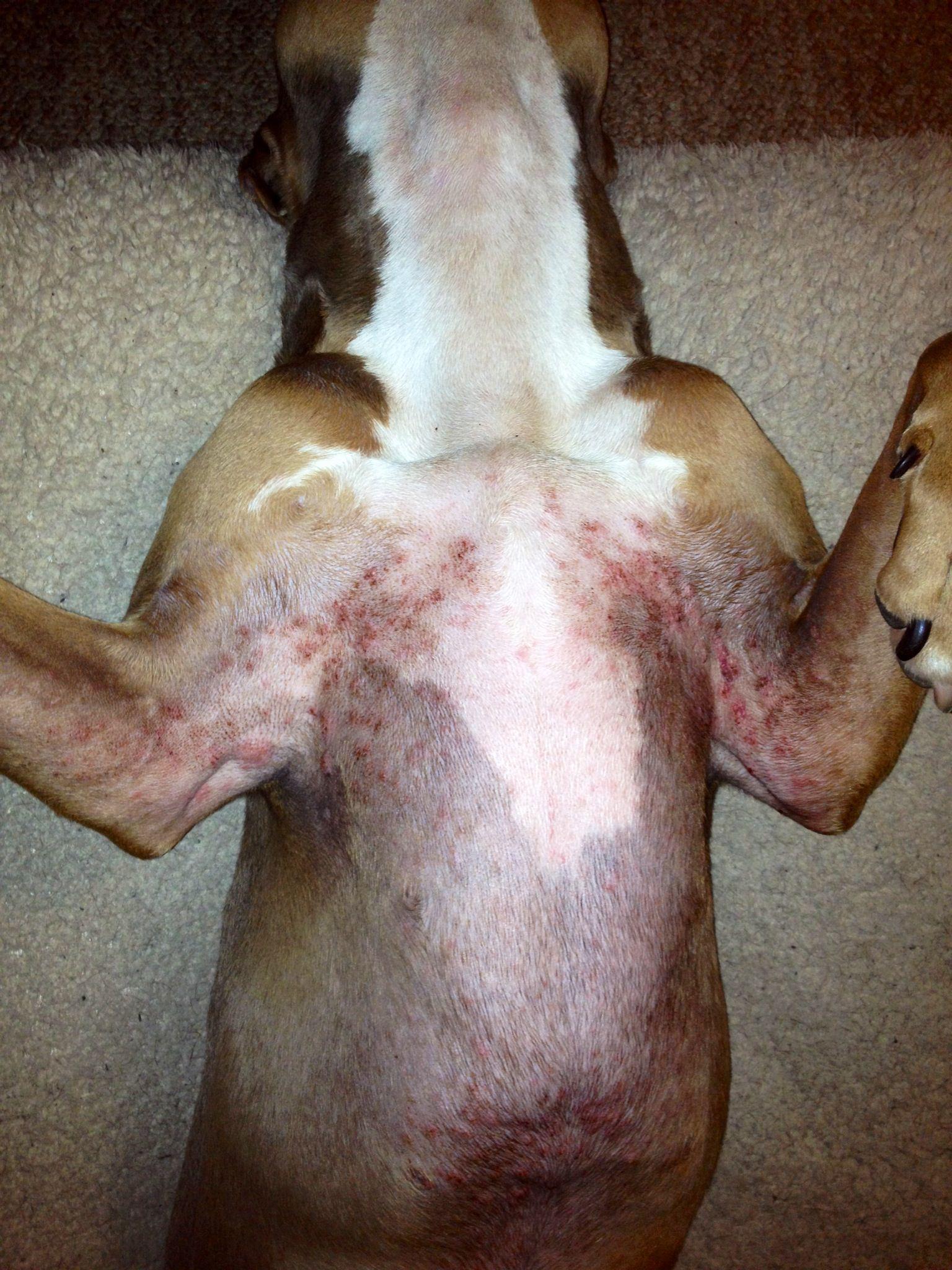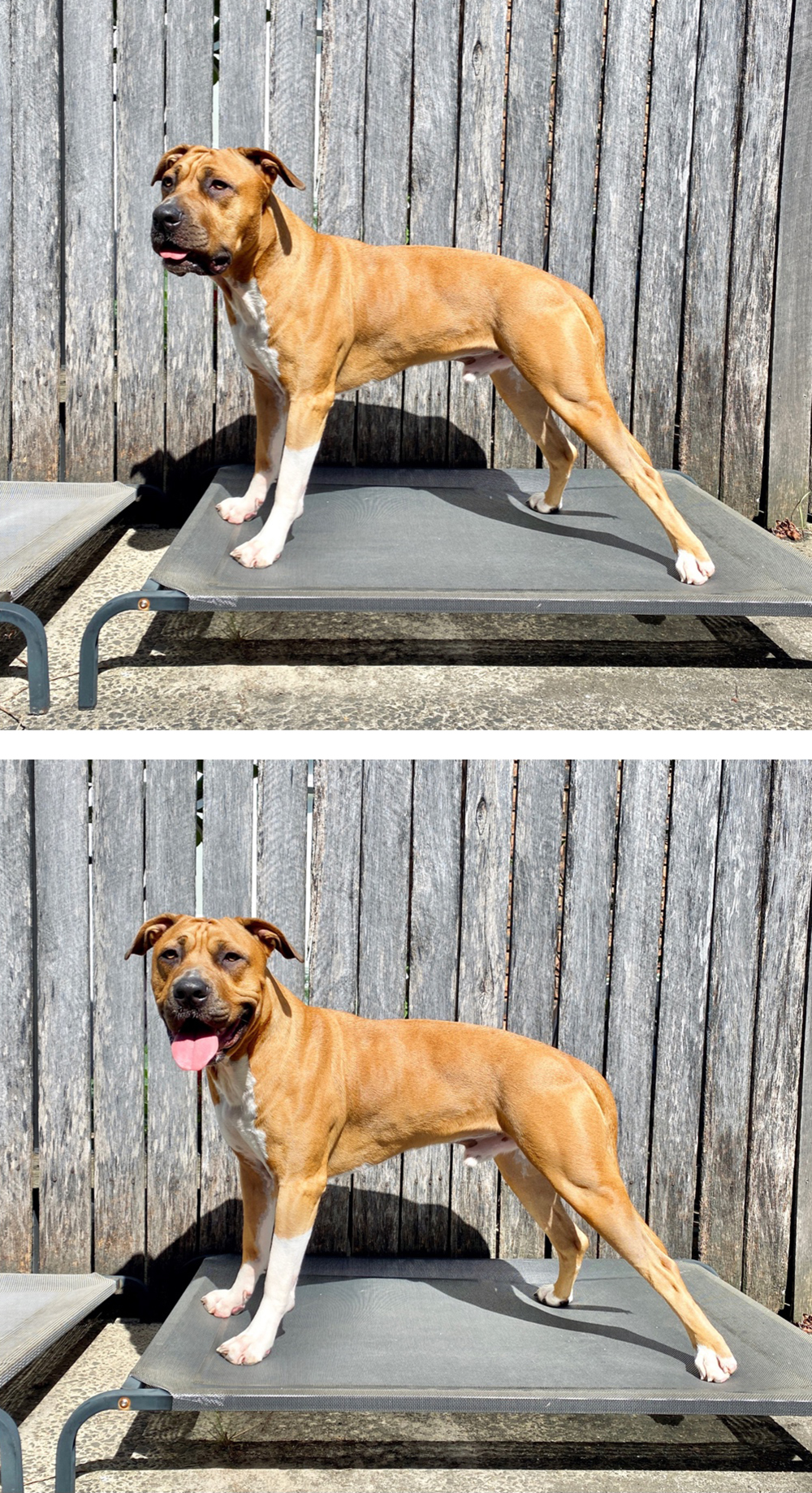This is a photo of Bruno after he’d crawled on the grass at a new dog training club. It looks pretty nasty, hey?

In Bruno’s case it was a contact allergy so the solution was quite simple:
- a medicated bath in Pyohex or Malaseb (you can use the conditioner also and leave it on to act as a barrier, all are available online or from your pet supply store)
- an anti-histamine (we used 25mg Phenergan but there’s a chart in this blog post with other brands and doses per kg)
- Neocort cream (you need to get this from the vet but once you have it, it will last for ages)
If Bruno was to frequent the same park regularly and always have this reaction I would have either put a t-shirt on him, dosed him with anti-histamine before going and/or applied a barrier cream of some sort (I often see zinc recommended).

^ stock image
Chopper and Angel used to just get itchy for no apparent reason so as a preventative we moved them (and all our dogs) onto an unprocessed diet and supplemented with kelp and fish oil. We rotate the proteins and add a whole raw egg every few days (shell and everything). Our dogs also get bone broth and golden paste daily (these are both very easy to make yourself – get in touch if you’d like the recipe for either).
Like with humans, good skin comes from the inside out. If you’re feeding processed foods and your dog is itchy that would be the first place I’d make changes. A very common allergy is chicken, so if you’re still having issues I’d cut that out and see if that helps. Thankfully my dogs have always been completely fine on chicken!
If environmental causes have been ruled out and you’re running out of options you could try an elimination diet. Prime100 make single protein rolls and have information on elimination diets here.

When foster puppy Malo arrived he had very flakey skin and was scratching almost non stop. Firstly we ruled out fleas and then he had a skin scrape at the vet for mites, which showed none. After that our course of action was putting him on Antinol Rapid and a quality diet of Ziwi Peak, Big Dog Raw and Prime100.
In just three weeks he now has the most beautiful silky soft coat that’s as shiny as hair that’s had serum applied to it! He also no longer scratches himself constantly, so that’s a big win.
Butters (below) is not the product of good breeding but he’s also been raw fed and on Antinol since 7wks – look at that shine.

Butters didn’t have a single skin flare up in his first six years of life but then – despite no change in his diet or environment – he got a bunch of sores around his muzzle, very red feet with interdigital cysts and some bleeding.

He had three vet visits in 6 months – a cytopoint injection, apoquel, antibiotics, steroids and several different creams – nothing helped. The last vet said to stop giving him beef but we didn’t do that because he’s been eating every different protein all his life without issue.
Obviously we tried everything I suggest above but we didn’t fully get on top of things until I started adding a splash of cold Calendula tea to his daily meal and giving him In-sideout (a pre and probiotic). No other changes were made to his diet or environment.
You can also use cold Calendula tea topically. Either sprayed or sponged on. I buy it from Amazon.
A Staffordshire Bull Terrier breeder I’m friends with recommended Thornit powder mixed with Sudocream (a tsp in a small tub or two in a large one). It’s called ear powder but it can also be used, mixed with the cream, on sore and red skin. I’ve seen a lot of people recommend Colloidal Silver too but we’ve never tried it.
Disclaimer: These are just some things that have worked for us and our dogs, your issues might be different. While we don’t immediately run to the vet with skin issues I’m not recommending that you do that same, particularly if your dog’s skin is broken and/or infected. These are just the steps we take to try and prevent the issue from escalating.



